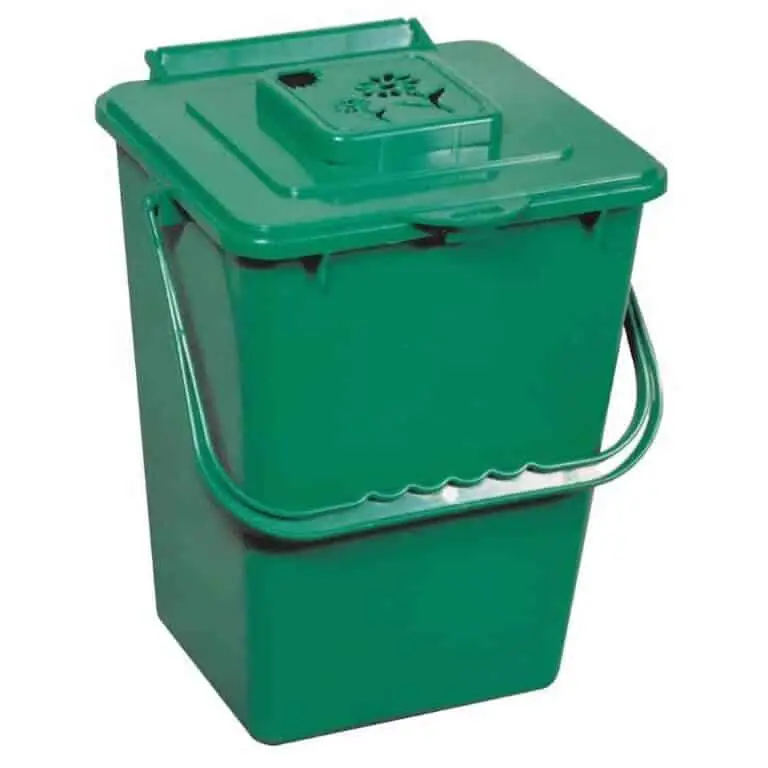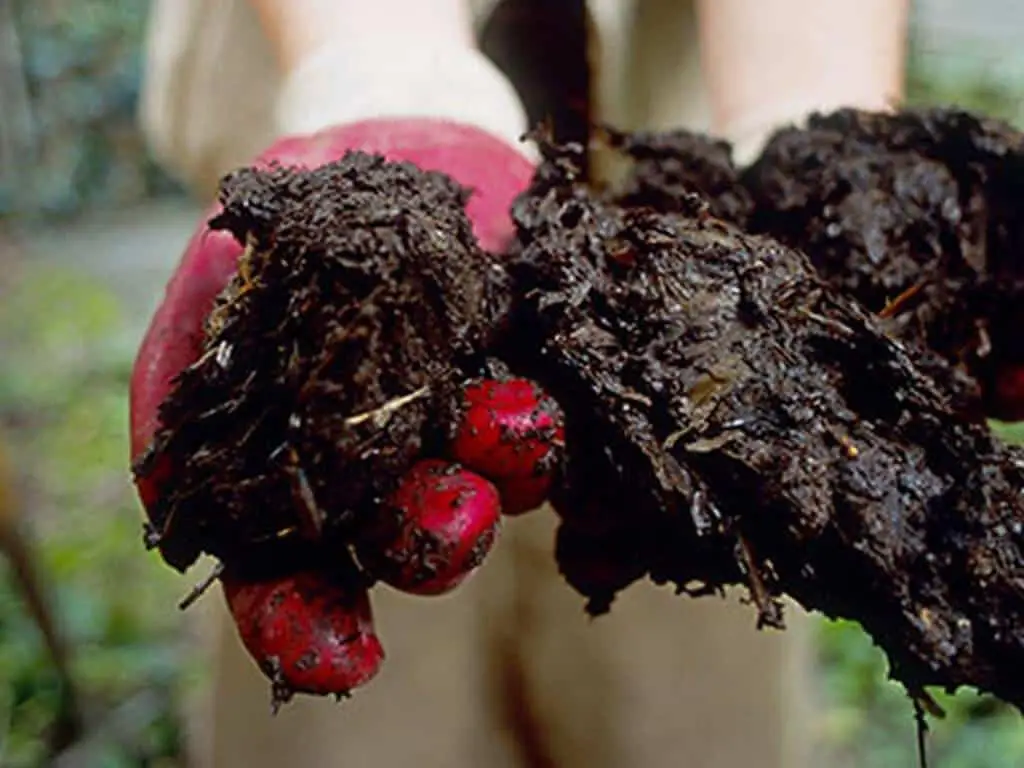Contents
When you consider composting, many things can go wrong from the bin to the compost itself. The inadequate conditions can temper the quality of the compost. While these conditions will produce the compost anyhow, several conditions won’t turn the waste into compost. One of these scenarios occurs when your composter is not hot enough for the process. But, how to make a composter warmer? Well, there are many ways to increase the temperature of your composter. Before that, let’s discuss the general details about a composter.
What is a composter?
Have you heard about composting? The aerobic process of converting your food scraps into manure for plants. The container in which the composting is done is known as a composter. Now, the composter varies in shape and size based on the material and the technique used. In other words, you can also address the composter as the recycle bin, the one present in your kitchen. Indeed, the bin can be replaced by the composter, and that’s where composting begins. To start with, you can consider plastic composters, as they are widely used in the world.
Also Read : Benefits of Composting Food Waste
What are the types of composter?
The need for different composters depends on the process of composting and its speed. While many composters take months to process the waste, few of them take weeks or even days to complete the process of composting. Here are the different types of composters.
1. Plastic Composter
 As we discussed, the most widely used composter is a plastic composter. There are many benefits to using this composter. The plastic bin contains holes for air to pass through, making the process of composting easy and aerobic. Due to its lightweight, it offers convenience to the user. The plastic composter comes with a cool and handy design that offers visual satisfaction and ease while using. It will trap the odor of the waste material. Therefore, you can store a large pile without having to face an unpleasant experience.
As we discussed, the most widely used composter is a plastic composter. There are many benefits to using this composter. The plastic bin contains holes for air to pass through, making the process of composting easy and aerobic. Due to its lightweight, it offers convenience to the user. The plastic composter comes with a cool and handy design that offers visual satisfaction and ease while using. It will trap the odor of the waste material. Therefore, you can store a large pile without having to face an unpleasant experience.
2. Tumbling Composter

Another variety of composter is tumbling or rotating. Tumblers are also made up of plastic material, but they have other exciting features to offer as well. Usually, the most hectic task during composting is mixing the compost content. A tumbler can make this particular task easy. You just need to fill in the compost material in a tumbling composter and push it. While it’s rolling on the ground, the compost materials present inside will mix automatically. you can check other article on what to put in a compost tumbler and what not to put in a compost tumbler
3. Wood Composter
These composters are used when a large amount of waste product is converted into compost. The wood composters provide extra space for air to pass through, and they are actually effortless to build. Just get some old pallets and combine them in the shape of the bin. Your wood composter is ready to use. It is cheap and easy to use for every person looking to compost after several days.
Also Read : Best Continuous Composter
4. Ceramic Composter
It won’t be an ideal choice for homeowners to place a plastic composter in their house. For that, people prefer to have ceramic composter. Since the material of the composter is thick, it will prevent the nasty smell from escaping out. Moreover, you will get attractive options when you come across a ceramic composter.
What if composters are not hot enough?
Before getting to the solution, it’s essential to look at the problem that can happen if the composter is not hot. This will give you an idea about the necessity of maintaining the temperature inside a composter.
- Microorganisms require a specific temperature to start its process. Even if they start, they would need a constant high temperature to carry on. Otherwise, the process of composting will take more time than usual.
- One of the main reasons for the temperature problem is the quantity of green and brown in the composter. Green being the food scraps and brown the additional soil, mix up to produce the high-quality compost. If the quantity is not according to the requirements, the temperature will decrease automatically, and the product will lose its quality.
- The time that is taken by cold composting will affect the plants, as well. Most of the plants require compost every season for their better growth. If you fail to do so, they might be infected with diseases and can lead to further consequences. Evidently, this could turn out to be a major impact of cold composting.
Also Read : How To Manage Compost In Winters
5 ways to make a composter warmer
If you don’t want to compromise with the quality and quantity of the compost, it’s better to keep a check on the temperature. Don’t forget the inherited diseases that a plant might carry. So, if the temperature is getting lower, here are the methods to increase the temperature inside a composter.
1. The Volume Of The Material
To make the compost hotter, increase the volume of the pile. When materials are stacked up in a compile, the outside temperature has less effect on the inner compost. If the volume of material is increased, the temperature will provide less hindrance. The material inside the stack will remain warm, and the microorganisms will get a favorable temperature. You should stack the pile for at least 3-4 weeks to make it a huge pile. The height should be around 4-5 feet to get the best temperature inside.
2. Introduce Nitrogen
During the composting process, it is critical to balance the quantity of carbon and nitrogen. Now, you might get an appropriate amount of carbon with green vegetable scraps, but people usually miss the nitrogen part. Coffee is rich in nitrogen; therefore adding it would increase the temperature of the compile. What does nitrogen do? Nitrogen provides protein to microorganisms, which drags them out of their laziness. With protein in their body, microorganisms work faster and compost the pile quicker.
When adding nitrogen to the pile, make sure that you mix it well. It is crucial to evenly distribute the content for better results. Mixing can be done by churning the compile with the help of a spade. It will also increase the volume of the compile, making the compost hotter.
3. Moisture
Probably, the most crucial and easiest method of making the compost hotter is maintaining the moisture. Actually, the main reason for the temperature fall is either the high moisture or low moisture in the compost. The water content should be exact to get the best result. How to do that? While compiling the compost, sprinkle water after each layer. Make the compost moist but not soggy.
If the compost turns soggy, the microorganism will find it challenging to break the component. This will lead to slow composting. On the other hand, if the compost is too dry, the microorganisms will not get enough water to multiply. Therefore, slowing the process of composting.
4. Proper Exposure To Air
Each and every particle of the compost should be aerated. This process will maintain the temperature of the compost. While you are compiling compost, the particles inside are not open to the air. Therefore, the temperature cools down. What you can do is turn the compost after every few days. Remember to repeat the process once every week.
Now, you should also not turn the compost more than once a week. This will make your compost dry, and the microorganisms will work slower. The outside temperature will also affect this process. If the temperature is too high, you can increase the number of turns.
5. Add The Dirt

Yes, you heard it correctly, add the dirt. Another reason for the compost not heating up could be inappropriate microorganisms. The microbes are the active members who perform composting. When they are not doing their job correctly, it’s time to replace them with better microorganisms. How will you do that? By adding dirt into the compost pile. Dirt contains active bacteria and fungus that will continue the process of composting. These bacteria and fungi will increase the speed of the process and hence the temperature.
The dirt will also add up the moisture content in a pile, making the compost hotter. It can include the topsoil of your garden or any other dirt particles that contain enough bacteria and fungi. It might look ugly, but you are dealing with waste after all. You cannot expect sprinkling flowers.
If you still having an issue with composter in winter seasons, It is always advisable to use indoor electronic kitchen composter
Hotter the compost, faster the composting
The temperature can alter the speed of your composting process. Hence, it’s very crucial to maintain the proper amount of heat inside the pile. These processes will help you to maintain the temperature. Therefore, you can enjoy composting and make the world cleaner and greener.
Want to know more about gardening ?
Fill in your email address in the form below and you'll receive all the latest updates directly in your in-box.
Thank you for subscribing.
Something went wrong.